
Pope Francis greets the faithful after a pause in front of a statue of Mary and Jesus as he arrives to celebrate his inaugural Mass in St. Peter’s Square March 19 (Galazka photo)
“The correct term for the ceremony,” Fr. Lombardi clarified, “is not enthronement but inauguration. As successor of Peter, the Pope is Bishop of Rome, and the Church of Rome ‘presides in love’ over the others. Also, it is a celebration rich with symbols that recall the Pope’s tie to St. Peter, beginning with the place where, according to tradition, Peter was martyred.”
The Press Office Director also explained where those participating in and attending the Mass would be located. “On the left-hand side of the ‘Sagrato’ (porch of the Basilica) will be seated bishops and archbishops (around 250 are expected), ecclesiastics, and delegations from other Churches and Christian confessions. On the right-hand side of the ‘Sagrato’ will be delegations from various countries led by heads of state, ministers, etc. On the St. Peter’s statue side of the piazza will be seated Jews, Muslims, and members of other religions, then around 1200 priests and seminarians. On the St. Paul’s statue side of the piazza will be seated the diplomatic corps accredited to the Holy See and other civil authorities. The rest of the piazza will be standing room for all those without tickets. A large number is expected to attend.”
Between 8:45 and 8:50 am the Pope left the Domus Sanctae Marthae and started to move through the crowd in the various sections of the piazza—in the popemobile—greeting those gathered. He returned to the sacristy, via the Pietà side, around 9:15 am. Mass began at 9:30 am.
Regarding the beginning of the ceremony, the Pope, having entered the Basilica, headed to the Confession (St. Peter’s tomb under the high altar) while trumpets sounded the “Tu es Petrus.” The Pope venerated the tomb of St. Peter, together with the Patriarchs and Major Archbishops of the Eastern Rite Catholic Churches (ten in number, four of whom are cardinals). He was then presented with the Pallium, Ring, and Book of the Gospels that had been placed on St. Peter’s tomb the night before.
The Holy Father then came back up from the Confession to the main floor of the Basilica, from which the procession continued. The Laudes Regiae (Christ is King) was chanted, with some invocations taken from the Vatican II document on the Church, Lumen Gentium. In the Litany of Saints are particularly to be noted, after the Apostles, the Holy Roman Pontiffs who have been canonized up to the most recent: St. Pius X. Fr. Lombardi clarified that these are only the pontiffs who have been named as saints, not those who have been beatified. The procession then made its entrance into the square.
Fr. Lombardi listed those who concelebrated the Mass with Francis: all the cardinals then present in Rome, joined by the Patriarchs and Major Eastern Rite Archbishops (6); the Secretary of the College of Cardinals; and two Superior Generals (that of the Order of Friars Minor, José Rodriguez Carballo, and that of the Jesuits, Adolfo Nicolas Pachon, respectively President and Vice-President of the Union of Superior Generals). In total about 180 concelebrated, and they were seated at the left (that is, in front of the ecclesiastics, not the national delegations).
Before the Mass began there took place the rites specific to the beginning of the Bishop of Rome’s Petrine ministry. These included:
The Imposition of the Pallium:

The pallium is placed on Pope Francis during his inaugural Mass. With his fisherman’s ring and the pallium, the main symbols of the Petrine office, the pontiff chose styles in continuity with two of his predecessors (CNS photo).
Made of lamb’s wool and sheep’s wool, the Pallium is placed on the Pope’s shoulders, recalling the Good Shepherd who carries the lost sheep on his shoulders. The Pope’s Pallium has five red crosses while the Metropolitans’ Palliums have five black crosses. The one used by Francis is the same as the one that Benedict XVI used. It was placed on the Pope’s shoulders by Cardinal Proto-deacon Tauran and, after the imposition, there was a prayer recited by Cardinal Proto-presbyter Daneels.
The Fisherman’s Ring:
Peter is the fisherman Apostle, called to be a “fisher of men.” The ring was presented to the Pope by Cardinal Deacon Sodano (first of the Order of Bishops). It bears the image of St. Peter with the keys. It was designed by Enrico Manfrini. The ring was in the possession of Archbishop Macchi, Pope Paul VI’s personal secretary, and then of Msgr. Malnati, who proposed it to Pope Francis through Cardinal Re. It is made of silver and gold.
The “Obedience”:
Six cardinals, two from each order, were among the first of those present approached the Pope to make an act of obedience. Note that all the cardinal-electors had already made an act of obedience in the Sistine Chapel at the end of the Conclave and that all the cardinals were able to meet the Pope during the following day’s audience in the Clementine Hall. Also, at the moment of “taking possession” of the Cathedral of Rome—St. John Lateran— the act of obedience was made by representatives of the various members of the People of God.

Pope Francis receives his ring from Cardinal Angelo Sodano, dean of the College of Cardinals. (CNS photo)
The Mass was that of the Solemnity of St. Joseph, which has its own readings (therefore they were not directly related to the rite of the inauguration of the pontificate). The Gospel was proclaimed in Greek, as at the highest solemnities, to show that the universal Church is made up of the great traditions of the East and the West. “Latin,” Fr. Lombardi said, “is already abundantly present in the other prayers and Mass parts.”
The Pope gave his homily in Italian and, although his style seems to be to improvise, on this occasion he did follow his written text.
Fr. Lombardi said that the Master of Ceremonies planned the ceremony to last not much more than two hours and, always with the intention of simplification and not making the rite overly long, there was no Offertory procession. The Eucharistic gifts were brought to the altar by the ministers who prepared the altar. Also, the Pope did not distribute Communion; this was done by the deacons on the “Sagrato” and, in the various areas of the piazza, by priests.
Regarding the music for the ceremony, several moments were notable. When the Pope entered the Basilica, silver trumpets rang out the “Tu es Petrus.” The Laudes Regiae was chanted during the procession from St. Peter’s tomb to the “Sagrato.” A 14-piece brass ensemble played at various moments of the celebration. During the Offertory the “Tu es pastor ovium” (You Are the Shepherd of the Sheep) motet composed by Pierluigi da Palestrina precisely for the inauguration of a pontificate was sung. At the conclusion, the Te Deum was sung with verses alternating between Gregorian chant and a melody by Tomas Luis de Victoria. As it was not held on a Sunday, there was no Angelus after the Mass.

Cardinal Giovanni Battista Re kisses Pope Francis’ ring as he pledges obedience. Six cardinals, representing the College of Cardinals, pledged obedience to the Pope (CNS photo)
At the end of the celebration, after removing his liturgical vestments, the Pope went to the Basilica’s high altar, before which he greeted the heads of the official delegations from various countries who passed before him. He then went to the Domus Sanctae Marthae for lunch.
Other delegations staying in Rome met with Cardinal Tarcisio Bertone, S.D.B., Secretary of State of His Holiness, and Archbishop Dominique Mamberti, Secretary for Relations with States the following day, Wednesday (for example, the President of Brazil in light of the upcoming World Youth Day). The Pope received delegations of the Christian Churches and ecclesial communities and of other religions in audience that day.
The main delegations attending were:
— 33 delegations representing Christian Churches and ecclesial communities (14 Oriental; 10 Western; 3 Christian organizations; and others). Among these were present: Ecumenical Patriarch Bartholomew I; Supreme Patriarch and Catholicos of All Armenians Karekin II; Metropolitan Hilarion of the Patriarchate of Moscow; many metropolitans; Anglican Archbishop Sentamu; Secretary of the World Council of Churches Fykse Tveit; etc.
— 16 members of important Jewish delegations including the Jewish community of Rome; international Jewish committees; the Chief Rabbinate of Israel; the World Jewish Congress; the Anti-Defamation League, etc.
— Delegations of Muslims, Buddhists, Sikhs, Jainists, etc.
Delegations of various sizes and levels from 132 countries confirmed their attendance.
“The delegations,” Fr. Lombardi emphasized, “are coming to Rome following information on the event made public by the Secretary of State. There were no ‘invitations’ sent out. All who wish to come are warmly welcomed. It must be made clear that no one has privileged status or will be refused. The order will depend on protocol and the level of the delegation.”
Naturally, the most important delegations were those from Argentina, led by President Cristina Kirchner, and Italy, led by President Napolitano and Prime Minister Monti with presidents of the Italian Senate, House, and Constitutional Court.
Also expected were six reigning sovereigns (such as from Belgium, Monaco…); 31 heads of state (Austria, Brazil, Chile, Mexico, Canada, Poland, Portugal, European Union…); three crown princes (Spain, Holland, Bahrain); 11 heads of government (Germany, France, the Vice President of the United States, …); and delegations led by first ladies, vice presidents, vice prime ministers, parliament presidents, ministers, ambassadors, and other dignitaries.

Some of the special guests, reigning royals, and heads of state.
Papal Coat of Arms:
The last topic that Fr. Lombardi covered was the new pontiff’s papal coat of arms and motto. These are the same that he used as bishop. The shield has a bright blue background, at the center top of which is a yellow radiant sun with the IHS christogram on it representing Jesus (it is also the Jesuit logo). The IHS monogram, as well as a cross that pierces the H, are in red with three black nails directly under them. Under that, to the left, is a star representing Mary, Mother of Christ and the Church. To the right of the star is a nard flower representing Joseph, Patron of the Universal Church. With these symbols the Pope demonstrates his love for the Holy Family.
What distinguishes his coat of arms as pontiff is that, instead of the wide-brimmed, red cardinal’s hat atop the shield, it is now crowned by the papal tiara and crossed keys.
His motto—“miserando atque eligendo” (because he saw him through the eyes of mercy and chose him)—is taken from the Venerable Bede’s homily on the Gospel account of the call of Matthew. It holds special meaning for the Pope because, when he was only 17 years old, after going to confession on the Feast of St. Matthew in 1953, he perceived God’s mercy in his life and felt the call to the priesthood, following the example of St. Ignatius of Loyola.

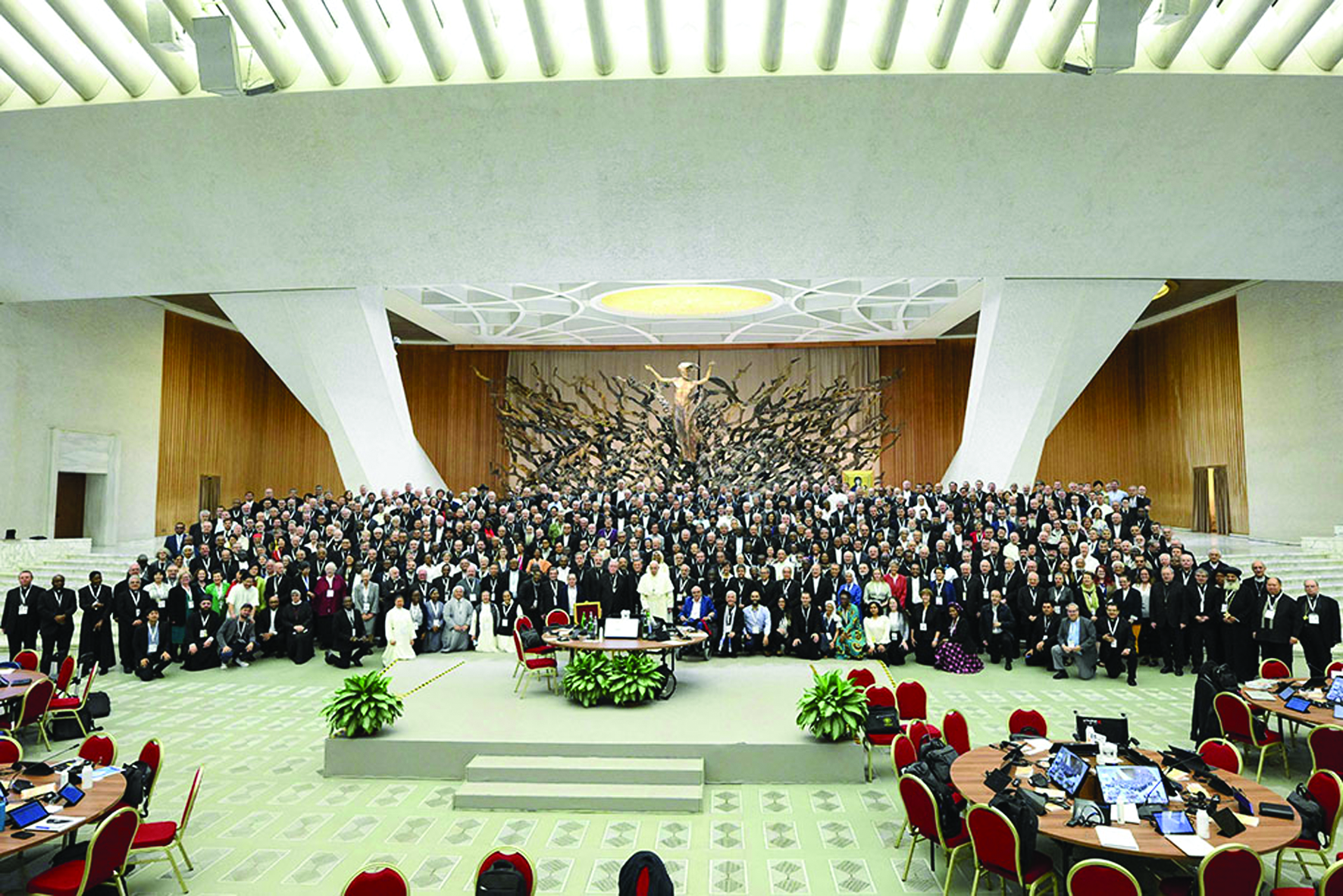
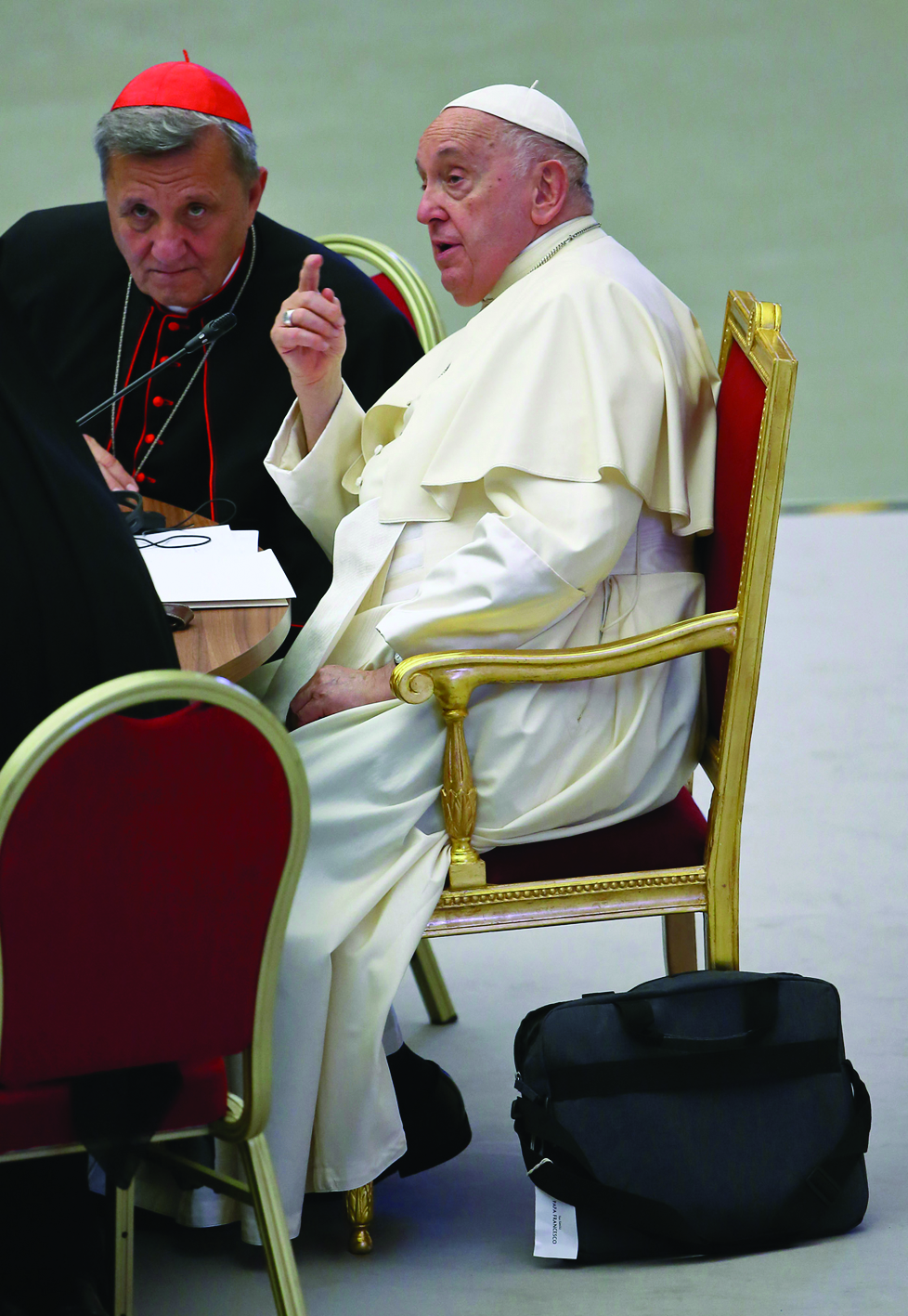
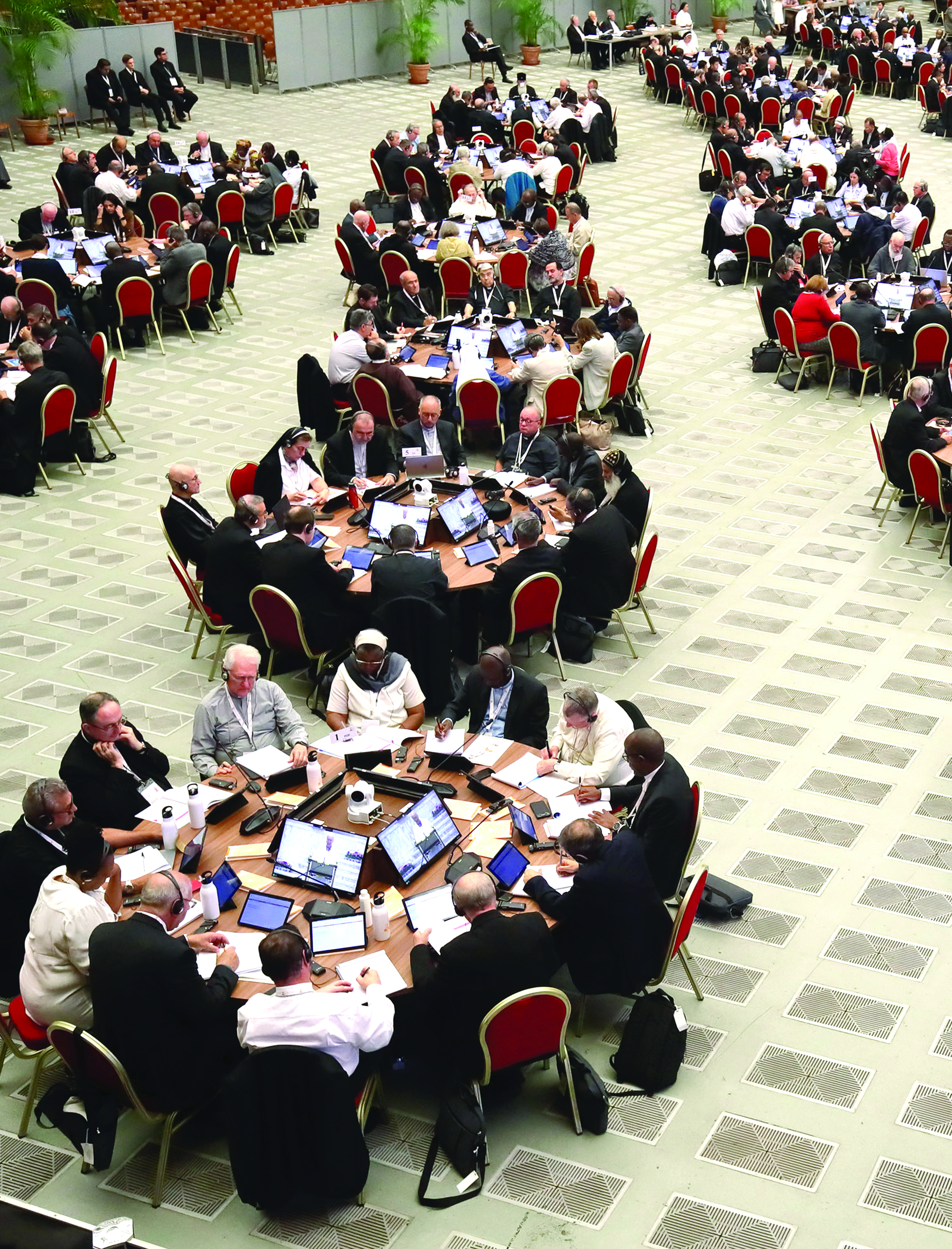
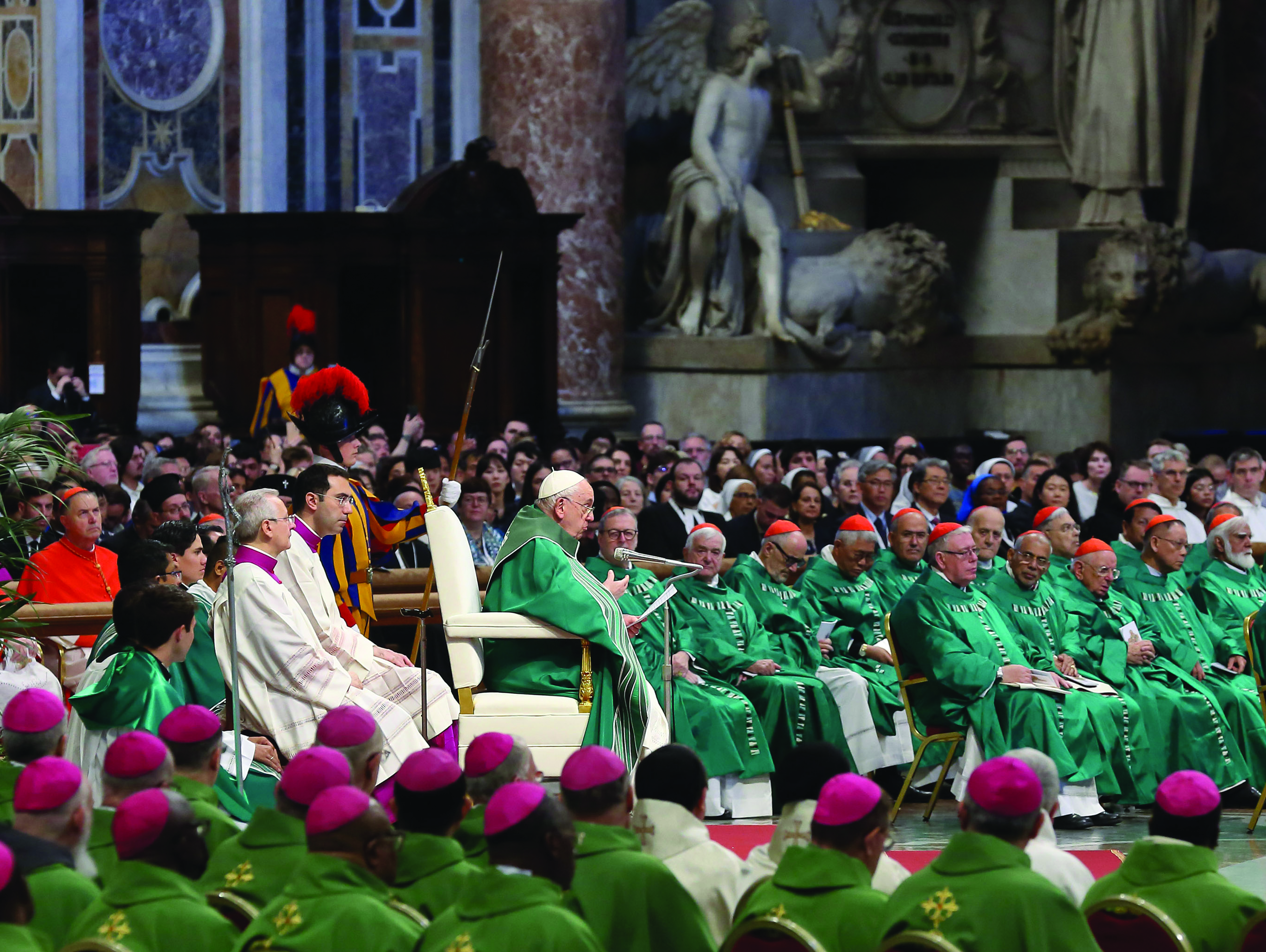
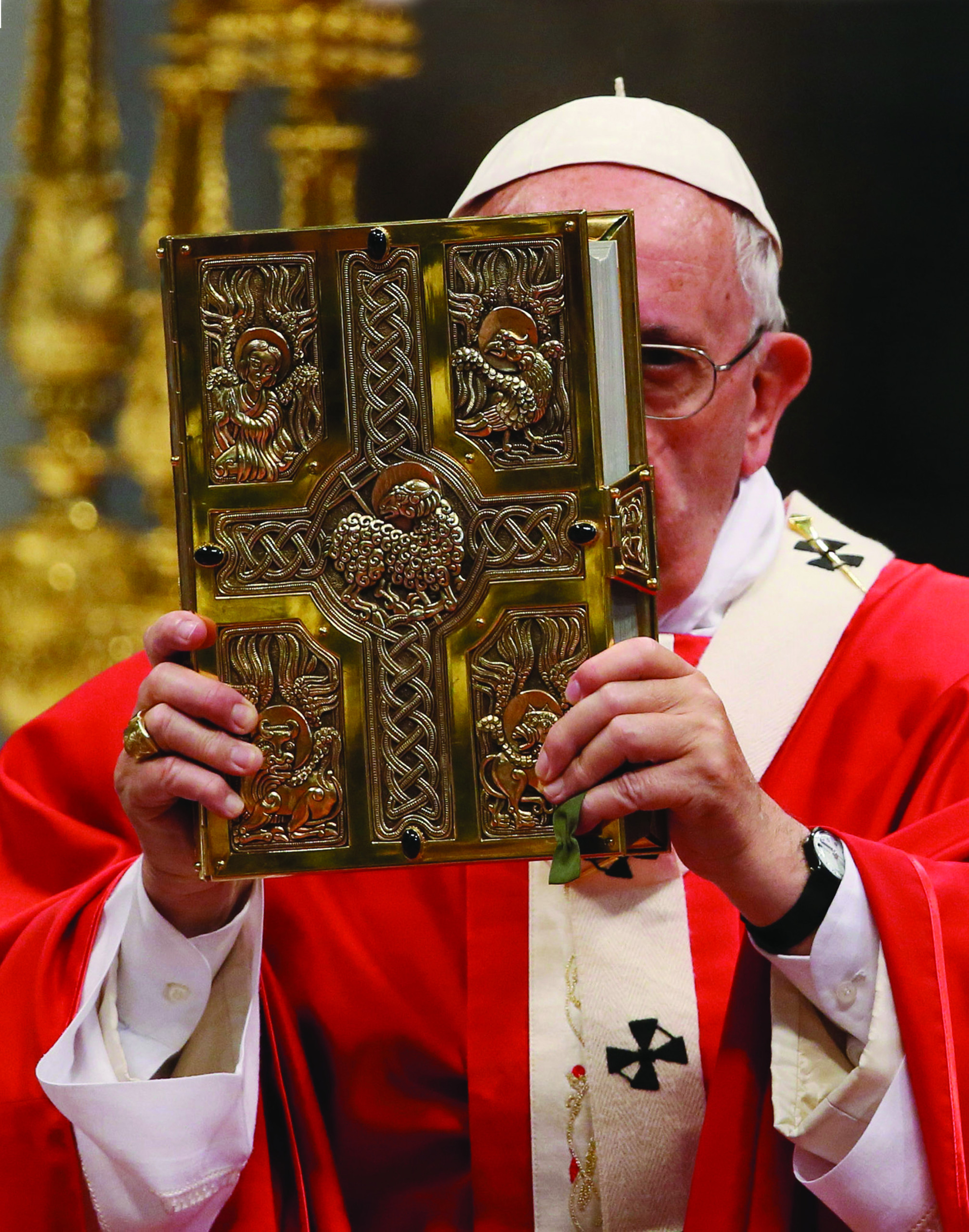
Facebook Comments